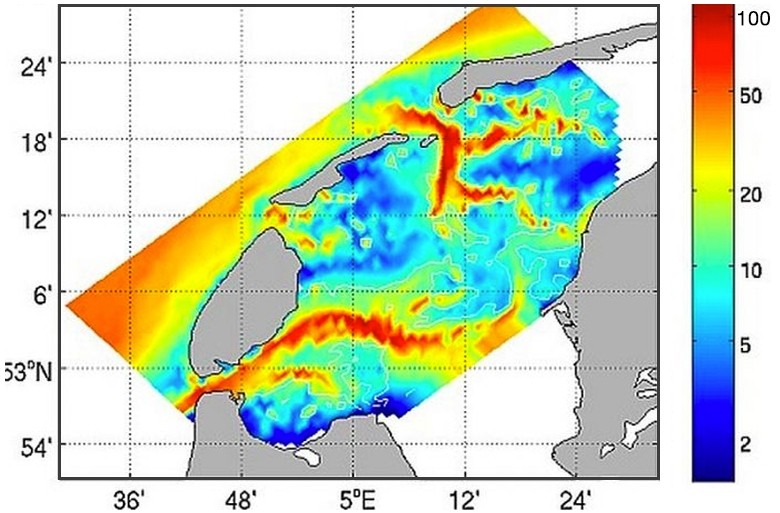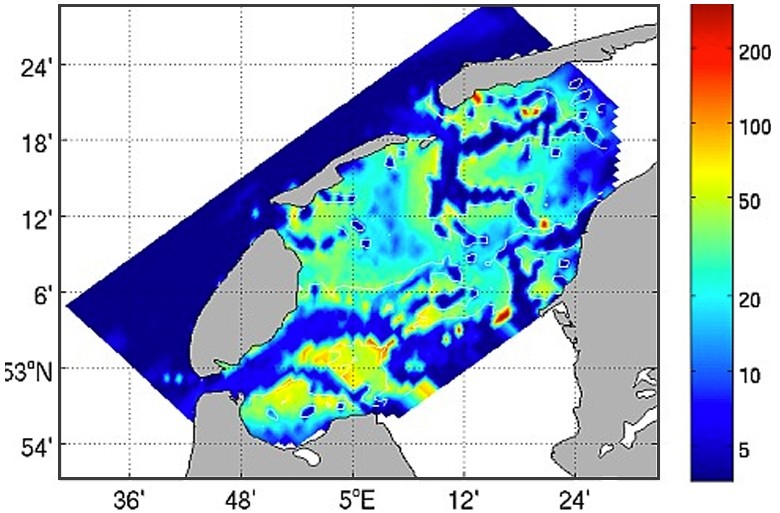Higher trophic levels

Pelagic food available for higher trophic levels
18.2 mg C m-2d-1=6.6 gr C m-2y-1=16.6 gr afdw m-2y-1
Food availability
The model does not explicitly simulate pelagic or benthic fish. However it is possible to estimate how much food is available for the higher trophic levels. In the first place use the losses due to (auto)mortality as defined for macro-benthos groups to limit their life-span (age). The cause of this limitations is mostly caused by predation (by birds and fishes) and hence this mortality can be considered as food for this higher trophic levels. In the second place by making use of the 'predation closure' in the model.
In our model carnivorous zooplankton represents the highest trophic level in the water column and infaunal predators in the sediment. In order to constrain these predators to a realistic range of observations, we have defined density-dependent loss processes which regulate their abundance.
These processes form the closure of the model and are self-regulating: density-dependent mortality and grazing by the top-predators on themselves.
We then calculate the total loss of these processes in the pelagic as well as in the benthic and assume that these losses are a measure for the food available to the higher trophic levels.

Benthic food available for the higher trophic levels
21 mg C m-2d-1=7.6 gr C m-2y-1=19.1 gr afdw m-2y-1